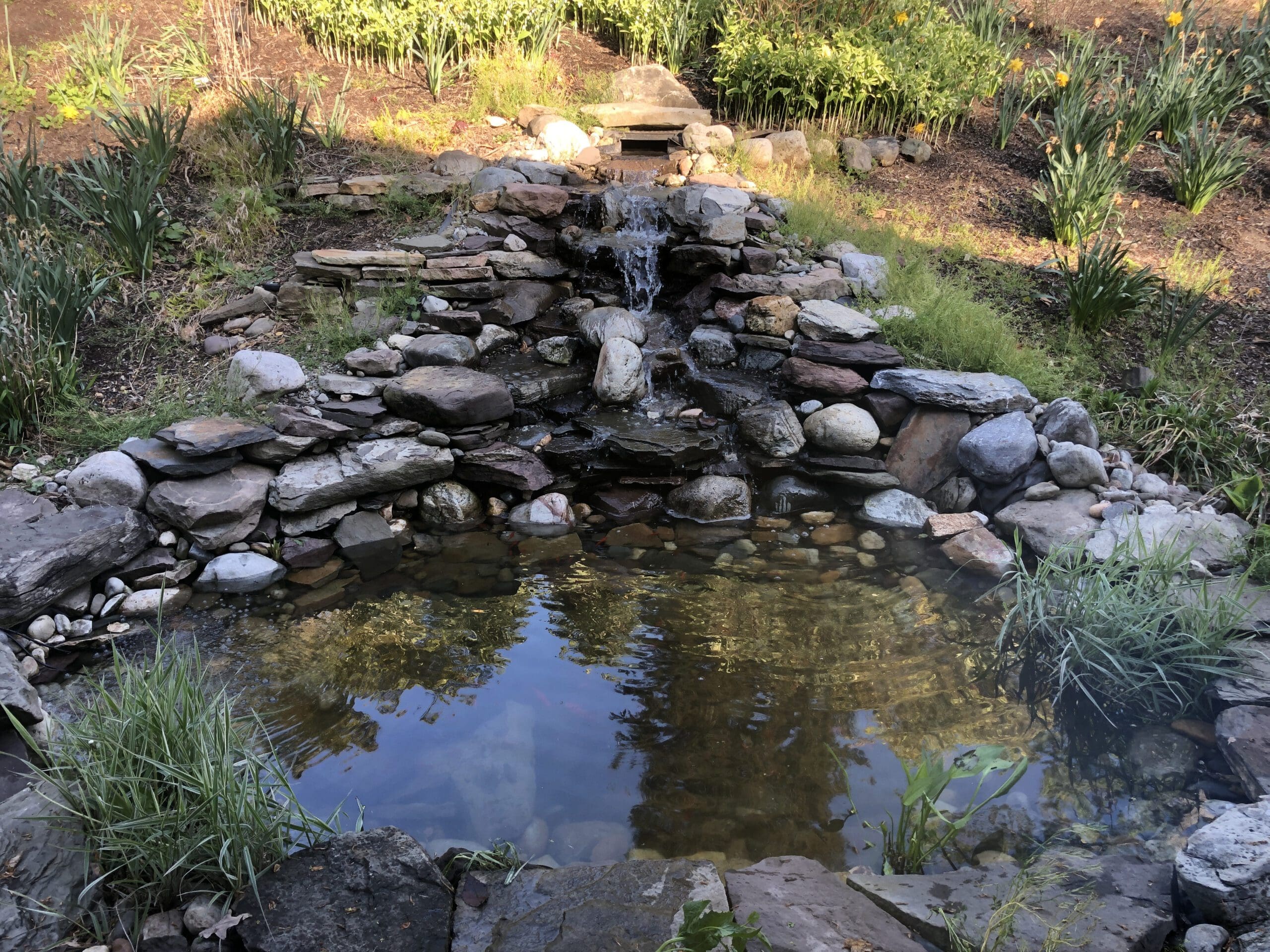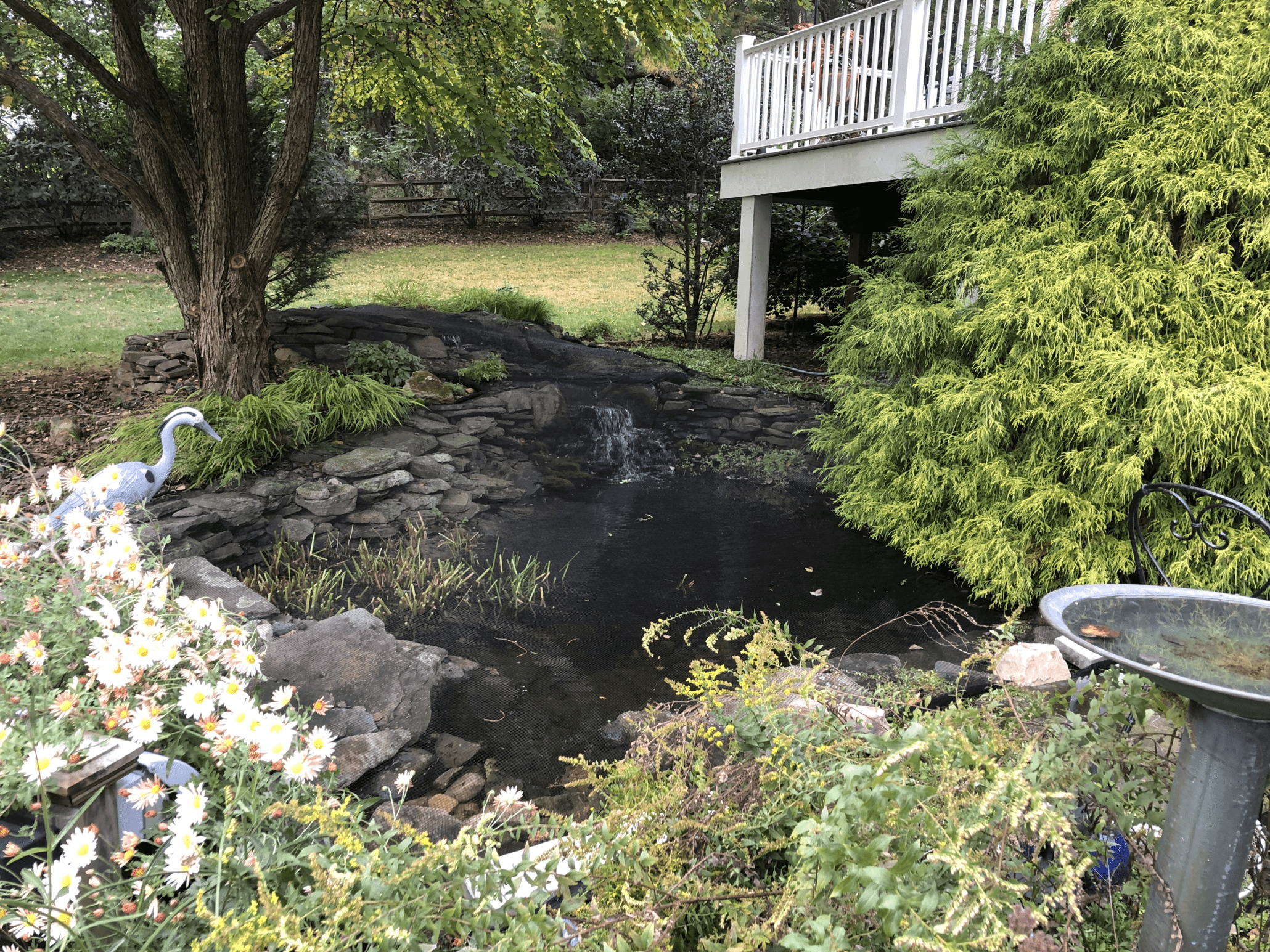A Guide to Fixing a Philadelphia Pond Problem
Do you have a Philadelphia Pond Problem? Leaks can be the most frustrating part of owning a pond. They are often misdiagnosed and misunderstood. Understanding how leaks work and how to detect them will save you time, money, and headaches.
What is Evaporation?
First, let’s have a look at what evaporation is and what it isn’t. Evaporation is caused by water turning into a vapor and escaping from your pond. The amount of water loss will vary according to the region of the country and the time of year.
Ponds that are located in areas of the country like Philadelphia, with moderate temperatures and high humidity can expect to see 1 to 1 ½ inches of water loss per week during the spring and summer.
Evaporation is not filling your pond up all the way one evening and waking up the next morning to find the water six inches lower. That’s a leak! If your pond is experiencing a loss of water at a more rapid rate, you either have a leak, or your frogs are drinking the water. Seriously, let’s figure that it’s a leak. What do you do then?
Philadelphia Pond Problem: Low Edges
Look for any low edges. Settling at the pond’s edge is the most common cause of a leak, especially in a new pond. Typically, the low edges are found around the stream and waterfall where settling may have occurred after a few rainfalls. These areas are usually built up during the construction of the pond using the soil from the excavation and are prone to some settling.
Carefully inspect the edges of not only your stream and waterfall, but also the perimeter of the pond. As the dirt around the stream or waterfall settles, it can create low spots that may cause water to escape over the edge of the liner. Keep your eyes peeled for wet mulch or gravel, or muddy areas around the perimeter of your pond. If you find a spot that’s leaking, all you have to do is lift the liner up and push some soil under it in order to raise the edge. Bingo – leak fixed!
Low edges can be built back up by simply backfilling and compacting soil beneath the liner in order to raise the edge of the liner above the water level.
Obstructions in the Stream and Waterfalls
In addition to checking for low edges, you should also check your stream and waterfall. Rocks and excessive plant or algae growth in the stream or biofalls can restrict the flow of water and divert it over the edge of the liner.
Plants and algae should be maintained by trimming them back in order to let the water pass freely. All in all, these leaks are extremely easy to fix.
Still Leaking?
You’ve spent 15 minutes or so following the suggestions listed above and you still can’t find the leak. What do you do next? It’s time for a little more work, and some drastic measures. You’ll have to shut your pump off for a day. By doing this, you’ll be able to determine the approximate location of the leak.
- Make sure the pond is filled to the appropriate level.
- Unplug the pump.
- Let the pond sit for 24 hours.
- If the water level drops, then you know the leak is in the pond.
When the Water Drops
- To find out where the Philadelphia Pond Problem is occurring, allow the water level to continue to drop. The level where the water stops dropping is the level where the leak is located.
- Concentrate your search around the perimeter of the pond at the level that the water has stopped dropping.
Now the fun begins! At this point, you may want to consider calling in a pond professional, but in order to reveal the exact location of the leak, you’ll need to:
- Remove any rocks around the entire perimeter at the level where the water stopped. You can then carefully check for some sort of puncture, or hole in the liner.
- When you find the hole, you simply patch it with a liner patch kit available at pond supply retailers.
- Now you can replace the rocks, fill the pond back to the top, and enjoy!
Steady and Level
If the water level remains the same, then it is safe to assume that that the leak is not in the pond. Now you’ll need to check the pipe, the plumbing fittings, and the pump connections for leaks.
Another possible culprit is the faceplate of your skimmer, if you have one. If the water level stopped dropping above the bottom of the faceplate you should investigate the skimmer. It may not have sealed correctly.
If the Leak Is in the Skimmer
- Investigate the skimmer faceplate without disassembling it.
- Simply move a few rocks around the front of the skimmer and slide your hand behind the liner, feeling for wet soil around the opening of the skimmer. If the soil is saturated, then the faceplate may have not been installed properly and might be the source of the leak.
- Remove the faceplate, clean all of the old silicone off the liner, and refer back to the instruction manual on proper procedures for sealing the skimmer faceplate to the skimmer. Hopefully, you’ve solved the leak.
It’s not fun to have a Philadelphia Pond Problem. It can be a time-consuming and frustrating process to locate the leak. Hopefully with these steps and tips, you can quickly locate the source of the leak and get right back to enjoying your water garden.
If you still have a leak, reach out to us and we’d be happy to help!






